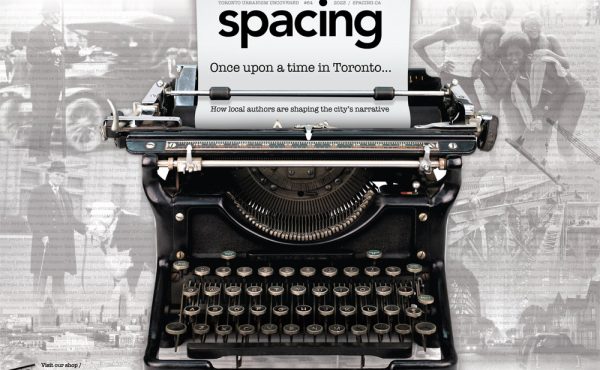Podcast: Play in new window | Download (17.0MB)

Episode 008 of Spacing Radio examines the idea of haphazardness in a city. Spacing magazine contributing editor Amy Lavender Harris takes producer Mieke Anderson and listeners on a literary tour of Toronto’s Kensington Market that explores the neighbourhood’s unique character. Spacing’s Todd Harrison sits down with Davy Rothbart, the creator of Found magazine and books, to discuss the world of lost objects found in the public realm of our cities. And we eavesdrop on urban designer Joe Berridge during a recent panel discussion at the IPAC conference here in Toronto. The music of The D’Urburvilles can be found throughout the episode (songs “Dragnet” and “Hot Tips”).
Links to stuff from Spacing Radio 008
- Kensington literary tour: Amy Lavender Harris’ Imagining Toronto web site
- Davy Rothbart: Found magazine and his new book
- Joe Berridge: biography
- The D’Urburvilles: web site and mySpace
photo by Rannie Turingan


One comment
I have a problem with Joe Berridge’s argument (around 12” in the podcast). I do not dismiss his arguments. Rather, I find them way too narrow. According to him, what makes a great city is whether or not it makes a great global city (competing effectively in the global economy and attracting international flows of investments).
First, this criterion is inapplicable for the vast majority of cities, since they are not “global cities”. Are Halifax, Québec City, or Winnipeg less livable or uglier than Toronto just because they do not have the latter’s international status?
More specifically, according to Berridge, the four criteria for a great global city are:
A great airport: what about the transportation network at large? Toronto and other Canadian cities should not overlook the option of a high-speed train!
Great universities: what about access to a high-quality education system that maximizes the chances of upward social mobility for everyone?
Downtowns that offer all the amenities that cater to those who work in, or benefit the most from the global economy: what about other parts of the city? What about other categories of the population?
A rich cultural offer: what about access to culture?
What Berridge is arguing for is, to sum up, a city that can accommodate a minority of priviledged members of the global elite. Yes, the city should strive to attract global investments and carefully consider the needs of that segment. But that category does not form the majority of the city’s population. Therefore the danger would be to neglect all the other categories, who nevertheless still deserve to be catered to. We do not need even more social inequality!
Also, what about other non-economic criteria for a great city? What about social integration, security, openness, and tolerance? What about a city built at a human scale, rather than a monstruous amalgamation of highways and skyscrapers? What about architectural quality and beauty? And by the way, how about defining a city’s beauty by the coherence of its urban pattern rather than by a handful of pretentious monuments and architectural landmarks? (perfect examples: Toronto’s CN Tower, and Montréal’s Olympic Stadium_ both of which being ugly and useless apart from attracting hords of tourists)
To sum up, I am not saying that Berridge is fundamentally wrong. What I am rather ctiticizing is the fact that his arguments are way too narrow and miss an entire chunk of the city’s population.